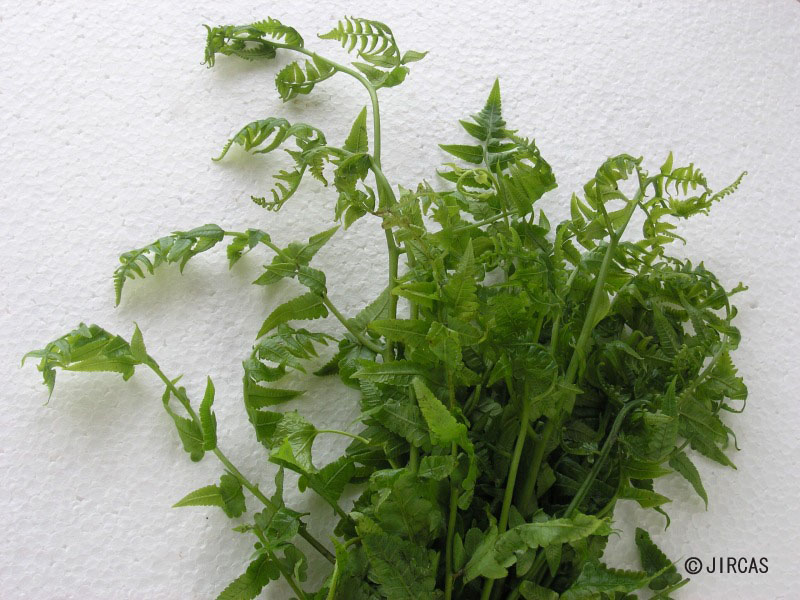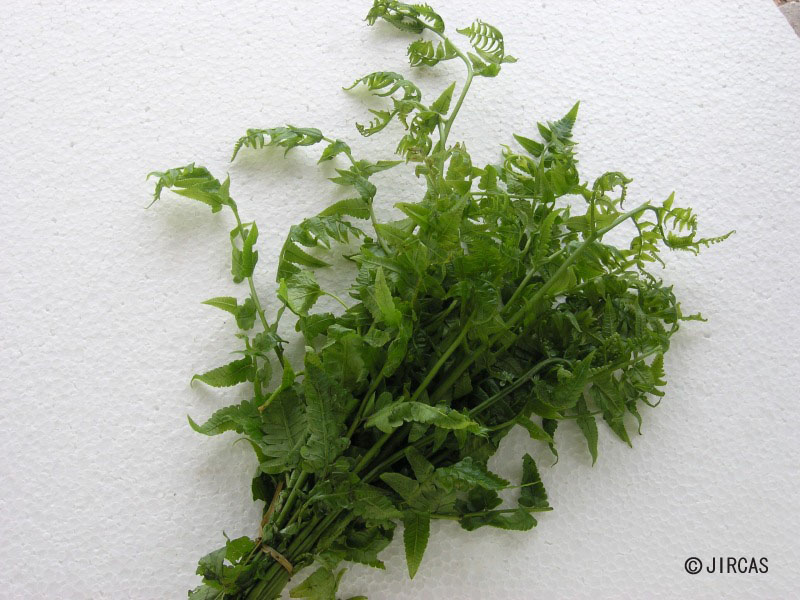Diplazium esculentum (Retz.) Sw. (Athyriaceae)
- Scientific name
- Diplazium esculentum (Retz.) Sw.
- Family name
- Athyriaceae
- Common name
- Paco (English); kuware sida (Japanese)
- Local name
- Phak kuut khaao
Perennial fern, up to 2 m tall; rhizome erect, up to 80 cm tall, upper part brownish, scaly. Stipe c. 70 cm long. Frond clustered at rhizome apex, bipinnate, up to 1 m long; pinnae ovate, abruptly narrowing at top, up to 40 × 25 cm, base truncate, apex acute; pinnule oblong, linear-lanceolate, acuminate, subcordate or auriculate at base, lobate, up to 13 cm long, 2–4 cm wide, with short stalk. Sori along the whole veinlet length, with narrow indusium along one side.
Commonly found in moist places by rice fields or along creeks, at elevations up to 1,500 m a.s.l. Easily propagated by spores, as well as by runners or planting rhizome pieces bearing buds.
Young fronds are blanched or steamed and served with nam phrik (dipping sauces), or fried and served with oyster sauce. Contains 90 g water, 3.1 g protein, 1.2 g fibre, 1.3 g ash, 115 mg phosphorus, 22 mg calcium, and 1.2 mg iron per 100-g serving.
Young fronds are blanched or steamed and served with nam phrik (dipping sauces), or fried and served with oyster sauce. Contains 90 g water, 3.1 g protein, 1.2 g fibre, 1.3 g ash, 115 mg phosphorus, 22 mg calcium, and 1.2 mg iron per 100-g serving.





